Izzy Lane – Isobel Lane
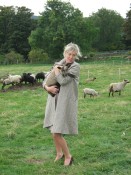 I spent years trawling shops, wondering why it was impossible to find anything made from British wool. Then when I found out from farmers that they were burning and burying their wool as they were paid such a pittance for it and that any wool in our stores was being imported from Australia or New Zealand, I became determined that I would start a fashion label using British wool. I found our textile industry in a ruined state. The big brands had outsourced their manufacturing and processing to Asia, mills were closing by the week, and I discovered, had been for decades. Birmingham used to have hundreds of button makers, the only one I could find still making them was just doing demonstrations in a museum. There was one worsted spinner left – there were once hundreds. It made me more determined that something needed to be done as soon there would be no textile industry left.
I spent years trawling shops, wondering why it was impossible to find anything made from British wool. Then when I found out from farmers that they were burning and burying their wool as they were paid such a pittance for it and that any wool in our stores was being imported from Australia or New Zealand, I became determined that I would start a fashion label using British wool. I found our textile industry in a ruined state. The big brands had outsourced their manufacturing and processing to Asia, mills were closing by the week, and I discovered, had been for decades. Birmingham used to have hundreds of button makers, the only one I could find still making them was just doing demonstrations in a museum. There was one worsted spinner left – there were once hundreds. It made me more determined that something needed to be done as soon there would be no textile industry left.
When it came to sourcing wool, as a vegetarian and desperately in love with all animals, I realised it would be impossible for me to buy the wool from animals which would be slaughtered and apart from a few pets, all sheep are. I discovered that lambswool is normally shaved from the lambs after slaughter. My only way forward would be to rescue my own flock so I decided on my 2 breeds – Shetlands and Wensleydales for their luxury fibre and set about, over the next couple of years, rescuing around 600 from certain, imminent death.
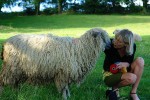 There had been no traceability whatsoever when it came to animal fibres in the fashion industry. With meat, consumers are given information and can opt for outdoor-reared, free-range, organic etc. it seemed ridiculous there was nothing when it came to fashion, even when it involved the same animals. It is illegal to buy wool directly from a farmer. By an Act of Parlaiment in the early 1950’s, it was decreed that all farmers should send their wool to the Wool Board where it would be auctioned to wool merchants. As soon as the wool arrives at the Board, it loses its origin and there is no way of knowing where that wool has come from and what lives those animals have led. For example…..if they have been live-transported to the Southern Europe. I feel sick in the pit of my stomach when I see articulated lorries crammed full of lambs or calves, knowing where they’re heading.
There had been no traceability whatsoever when it came to animal fibres in the fashion industry. With meat, consumers are given information and can opt for outdoor-reared, free-range, organic etc. it seemed ridiculous there was nothing when it came to fashion, even when it involved the same animals. It is illegal to buy wool directly from a farmer. By an Act of Parlaiment in the early 1950’s, it was decreed that all farmers should send their wool to the Wool Board where it would be auctioned to wool merchants. As soon as the wool arrives at the Board, it loses its origin and there is no way of knowing where that wool has come from and what lives those animals have led. For example…..if they have been live-transported to the Southern Europe. I feel sick in the pit of my stomach when I see articulated lorries crammed full of lambs or calves, knowing where they’re heading.
I have our sheep sheared in June when their fleeces ‘rise’. If we don’t catch it in time, they will shed it anyway on hedges and gate posts. That’s all that’s required of them, they will live out their lives in peaceful tranquility here in the Dales. After shearing, the wool is sent to a scourer in Bradford to be washed and then to a spinner, then a dyer. If it’s to be made into cloth, it goes to a mill in the Scottish Borders to be woven, then to the finisher. It’s a long, slow process before even getting as far as the actual manufacturer. It’s very satisfying to see the wool through the whole journey from the nurture of the sheep through to the finished pieces. Most designers will just source from fabric fairs – this feels much better and we can guarantee the integrity of each piece. I’m a great believer in slow-fashion. Buying less and buying pieces which will be wearable and cherished for decades which I believe our clothes will be.
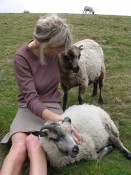
Women
A wide selection of stylish fashion clothing for all occasions including: dresses, tops, knitwear, skirts, eveningwear, coats, suits, jackets and more. Styles to suit a variety of tastes from classic to vintage and more in between: recycled and upcycled. This is sustainable ethical fashion at it's best.
Women's Ethical ClothingMen
If you're looking for something eco or ethical to wear for dress down friday, a casual weekend or holiday, you'll find it here. Tops, t-shirts, jeans, trousers from mainly fairtrade and organic cotton.
Men's Ethical FashionKids
Green fashion for kids is fun and made mainly from natural fibres including organic cotton and Fairtrade cotton. From baby to early teens, there's something to make all kids happy. Bright colours, animals, fun shapes that children can wear all year round.
Kids Green ClothingAccessories
A treasure trove of accessories from around the world can be found here. A vast selection of jewellery including necklaces, bracelets, rings and earrings to shoes, hats, bags, handbags and scarves. Whatever your style, these items will complete any outfit.
Eco-Friendly Accessories
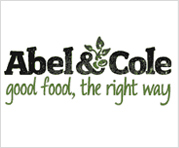
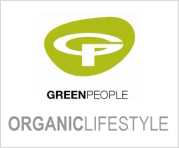



Comments are closed.